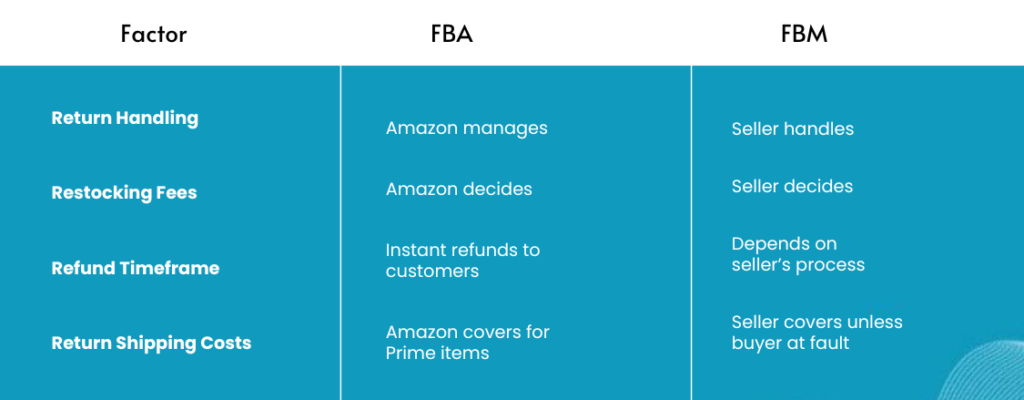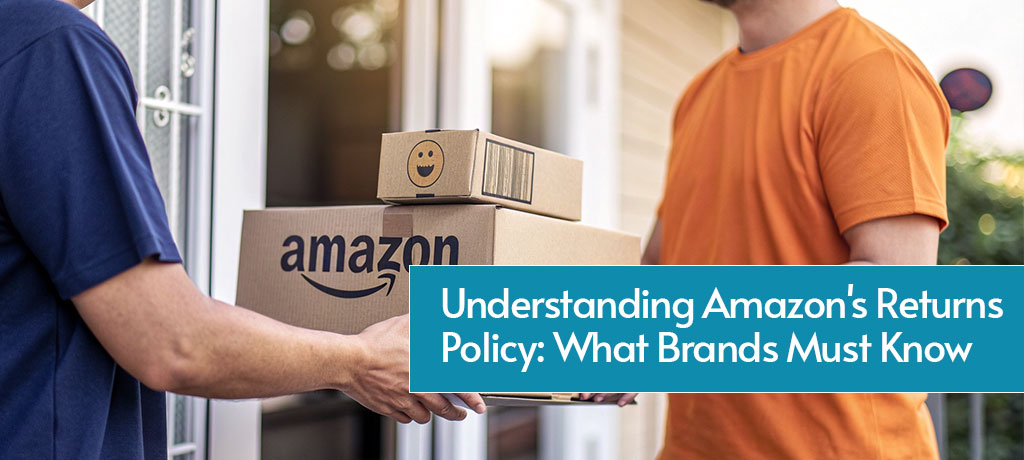Amazon
Understanding Amazon’s Returns Policy: What Brands Must Know
Handling returns on Amazon is a major challenge for brands selling in the marketplace. A flexible return policy attracts more customers, but if not managed well, it can lead to financial losses and operational headaches. For brand owners, understanding return guidelines is critical to protecting brand reputation on Amazon, maintaining customer trust, and ensuring compliance with Amazon’s rules. This guide covers everything established brands need to know about Amazon’s returns policy, key challenges, and strategies for managing returns effectively.
How Amazon’s Returns Policy Works
Amazon has a customer-centric return policy that allows buyers to return most items within 30 days of receipt. While this policy benefits customers, it presents significant challenges for brands, including return fraud, restocking fees, and inventory management issues.
Source: Amazon Seller Central
Key Return Guidelines for Amazon Brand Owners
- Return Windows:
- Most items are eligible for returns within 30 days.
- Some categories, like electronics, have shorter return periods, while holiday purchases may have extended return windows.
- Amazon Extended Holiday Return Policy allows items purchased between October and December to be returned until January 31.
- Who Handles the Return?
- Fulfilled by Amazon (FBA): Amazon manages customer service, returns, and refunds.
- Fulfilled by Merchant (FBM): The seller handles returns, refunds, and restocking.
- Return Shipping Costs
- If a customer returns an item due to a seller issue (e.g., wrong item sent), the seller covers the return shipping.
- If the return is due to buyer preference (e.g., changed mind), sellers can charge a restocking fee.
- Amazon’s Prepaid Return Labels
- Amazon automatically provides prepaid return labels for eligible items. The cost is deducted from the seller’s account unless Amazon is at fault.
Returnless Refunds: Should Your Brand Opt-In?
Amazon offers Returnless Refunds, allowing sellers to refund customers without requiring them to send the product back. While this saves on return shipping and restocking costs, it also increases the risk of fraud and revenue loss.
When Returnless Refunds Make Sense
- Low-cost items: Items with a high shipping cost-to-value ratio.
- Damaged or defective products: If reselling is not an option.
- Customer satisfaction concerns: For high-value customers, allowing a returnless refund can improve loyalty.

The Financial Impact of Returns on Amazon Sellers
Returns significantly affect revenue. Costs include:
- Return shipping and handling
- Restocking expenses
- Damaged or unsellable inventory losses
- Increased customer service workload
A high return rate can also impact a brand’s account health on Amazon. Frequent returns due to poor product descriptions or defects can lead to warnings or listing suspensions.
Strategies to Minimize Return Rates
Brands can reduce return rates by implementing these strategies:
- Accurate Product Listings
- Provide clear, detailed product descriptions to set the right expectations.
- Use high-quality images and videos showing the product from multiple angles.
- Highlight key specifications, dimensions, and compatibility details.
- Use Amazon’s Premium A+ Content & Brand Registry
- Enhanced product detail pages with comparison charts, infographics, and Q&A sections can reduce misunderstandings.
- Include size guides for apparel and electronics compatibility details to prevent unnecessary returns.
- Monitor Customer Feedback
- Use Amazon Voice of the Customer (VOC) reports to identify frequent return reasons.
- Update listings based on customer feedback to prevent repeat issues.
- Implement Strict Quality Control
- Defective or incorrect items increase returns and damage a brand’s reputation.
- Regular inspections help ensure customers receive what they expect.
Handling Returns as a Brand Owner
FBA vs. FBM: Return Process Differences

For FBM sellers, setting clear return policies and responding quickly to return requests is crucial for avoiding negative customer feedback and maintaining account health.
Amazon’s Return Policy Changes: What Brands Must Know
Amazon frequently updates its return policies. Recent changes include:
- Extended Return Windows: Amazon now allows longer return periods during peak shopping seasons.
- Automatic Authorizations for Certain Categories: Amazon automatically approves returns for some categories without seller intervention.
- Refund Without Return Option Expansion: More sellers now see this as an option to enhance customer satisfaction but should weigh the financial impact.
How Brands Can Stay Updated
- Regularly check Amazon Seller Central notifications for updates.
- Join Amazon seller forums and participate in discussions to learn from other brand owners.
Best Practices for Managing Amazon Returns
- Track Return Trends
- Identify patterns in returns to spot listing or product quality issues.
- Use return reports in Seller Central to analyze refund reasons.
- Optimize Customer Service
- Respond promptly to return inquiries to prevent negative feedback.
- Offer exchanges where possible instead of full refunds.
- Leverage Amazon Programs
- FBA Grade & Resell: Allows sellers to resell returned products as ‘Used – Like New’ to recover costs.
- Prepaid Return Label Program: Streamlines return processing for FBM sellers.
How Prime Retail Solution Can Help
Managing Amazon returns effectively requires a strategic approach. At Prime Retail Solution, we help brands navigate Amazon’s return policies, minimize return rates, and optimize their brand operations. Our services include:
- Listing optimization to reduce misleading information.
- Shipping/Distribution strategy consulting for return management.
- Account health monitoring to prevent return-related suspensions.
Brands selling on Amazon need to proactively manage returns to maintain profitability and protect their brand reputation. A well-handled return policy not only reduces losses but also boosts customer trust and enhances brand loyalty.Schedule a FREE consultation with us today!
Share





